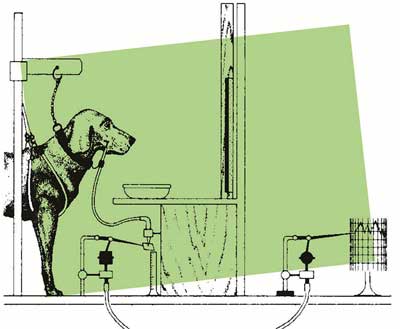We all remember learning about the famous psychological experiments in conditioned reflex performed by Ivan Petrovich Pavlov around the turn of the previous century. In simple terms: Pavlov would ring a bell prior to feeding his dogs (his test subjects); the dogs were quickly conditioned and came to associate the ringing of the bell with the presentation of food. Soon, all Pavlov had to do was ring the bell and the dogs' saliva flow increased.
That same principle is at work in branding. When we hear a name, see a logo, whiff a particular scent, or encounter a sensation, we are conditioned—based on our previous experiences with those things—to respond in a specific way.
When I see the distinctively shapely Coca-Cola bottle, for example, all my experiences with Coke—refreshment, summers of my youth, Captain Morgan rum, and more—flood into my brain and my conditioned reflex informs my decision-making.
Two Important Branding Lessons From Pavlov
1. Pavlov consistently rang a bell. He didn't change from a bell to a whistle and then switch to a horn. He consistently used a bell to condition his test subjects to react a certain way when they heard that ringing. So it is with delivering your brand.
Consistency is about creating a self reinforcing loop in which you define your brand incrementally through every customer touch point.
 2. When Pavlov rang the bell, he didn't withhold the food (the reward). To anchor that conditioned response, he followed the ringing with the food. Every time.
2. When Pavlov rang the bell, he didn't withhold the food (the reward). To anchor that conditioned response, he followed the ringing with the food. Every time.
It's been said that a brand is a promise wrapped in an experience; it's actually a consistent promise wrapped in a consistent experience.
Your brand is your assurance about who you are and what benefits you deliver. That promise gets reinforced every time your target audience comes in contact with you or your business, but only if you consistently follow through.
Here is Seth Godin's formula for building a brand:
Prediction of what to expect x emotional power of that expectation = a brand
Kinda looks like Pavlov's theory:
Ringing of the bell creates an expectation x the emotional anticipation of that expectation = salivating canine
Branding, then, is nothing more, and nothing less, than developing and delivering an expectation. The most successful brands promise that they will deliver their offerings in a specific manner welcomed by a target market, and (here's the Pavlovian part) they keep their promise over and over again.
So if you want to build a strong brand, establish a positive expectation and then consistently fulfill it.
Ringing the Bell Is an Inside Job
The key to developing and delivering a consistent brand experience is to make sure your staff is on board, along with other stakeholders, such as board members, key vendors, and those who are in contact with customers. Here's how:
- Be clear about what you want to communicate. Your brand idea should be really simple, so capture the spirit of what your brand stands for in as few words as possible. Think Disney (Fun Family Entertainment) or Nike (Authentic Athletic Performance). This "brand driver" or mantra serves as a sort of rallying cry. Your staff needs to know your "brand recipe" by heart so they can act on it instinctively. So make your recipe an easy one with not too many ingredients.
- People also need to understand where they fit into the whole and why it matters. You need to give them a context for their actions. One company I consulted with was known for the cleanliness of its facilities. Once this attribute of the brand was highlighted as an element worth differentiating on, the maintenance crew and groundskeepers finally understood why the "menial" jobs they performed were so important to delivering on the brand promise of the organization in a consistent way. These workers finally understood their role in the bigger picture.
- Give your team an innate sense of the brand. Simply teaching staff new buzzwords doesn't cut it. They won't need a cookbook for your brand recipe because they already know the ingredients—a new culture, a new set of behaviors.
- Your objective is to reach an internal "We get it!" Your staff should know what your brand stands for and how they, as team members, can deliver your brand experience consistently across all customer touch points. Your staff should be able to proclaim: "We know how to be the brand."
Branding is about conditioning your staff to deliver your brand promise consistently, and then creating a conditioned response in your customers and prospects.
That's because branding comes down to associating a name with a unique, meaningful benefit... just like Pavlov's test subjects associated the bell with the meaningful benefit of food.
And why a unique attribute? Because a lot of your competitors are ringing their bells, too.




